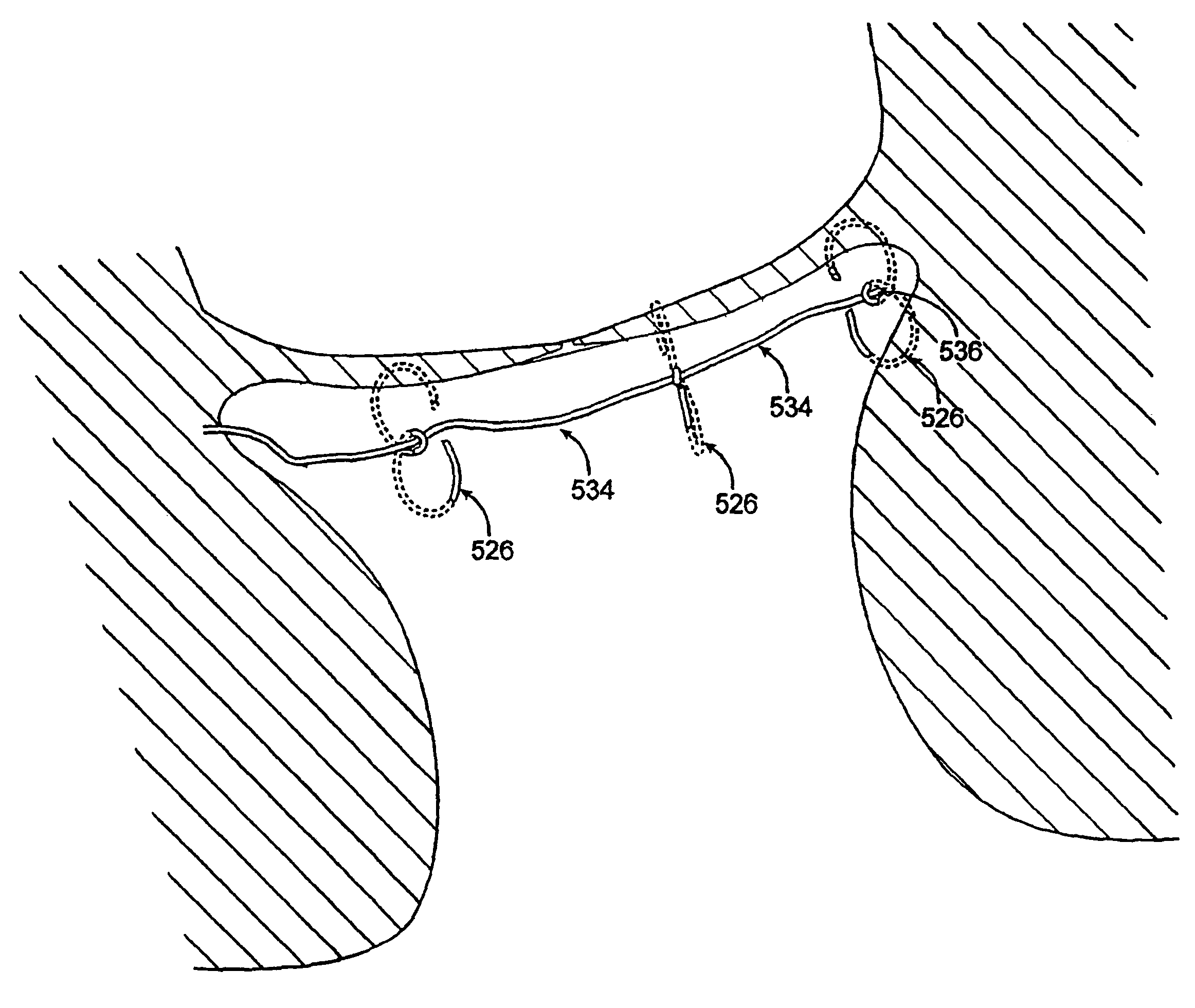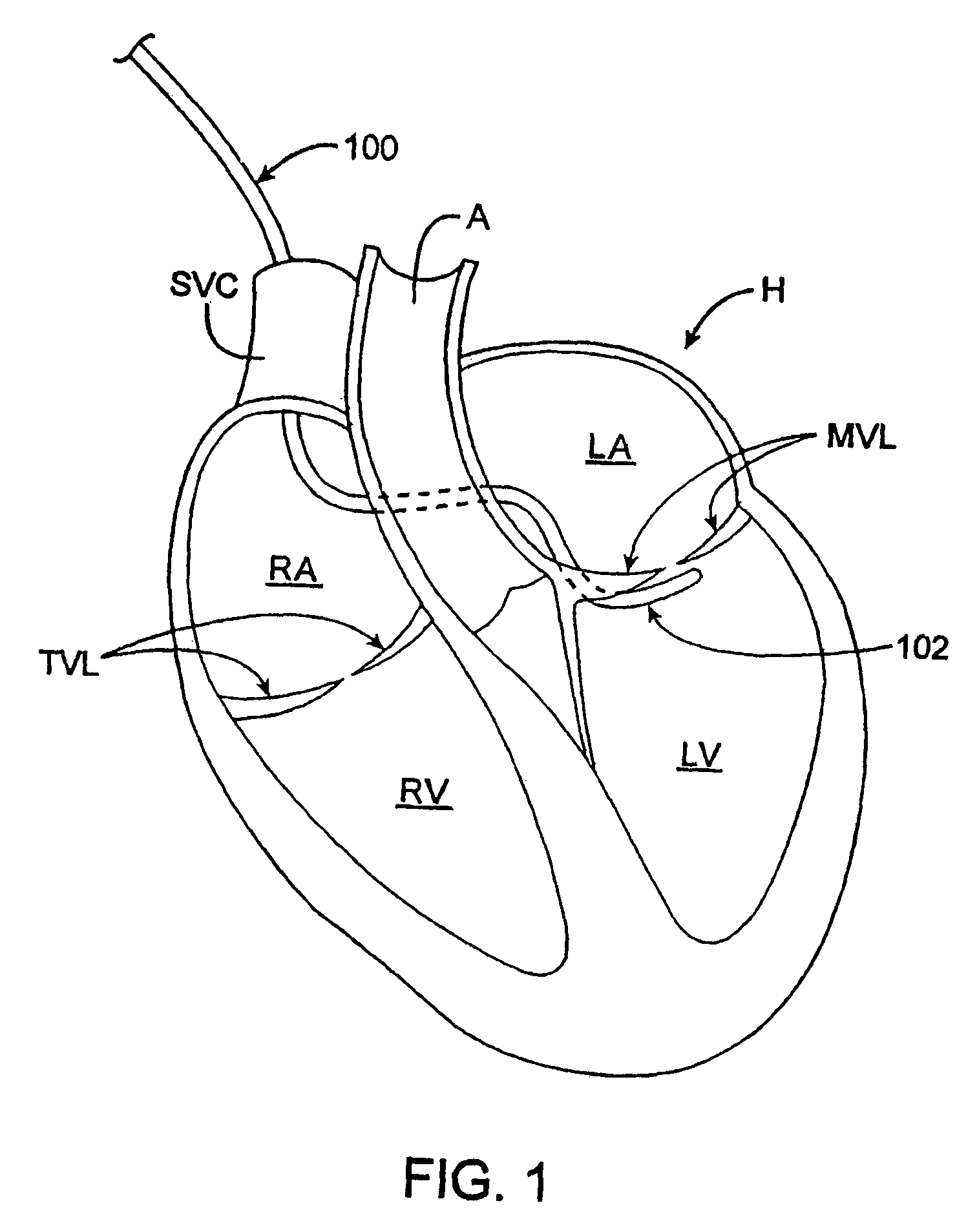Methods and devices for termination
a technology of termination and method, applied in the field of medical devices and methods, can solve the problems of difficult manipulation of knotting or tying suture material, difficulty in valve repair and replacement, and high cost of surgery
- Summary
- Abstract
- Description
- Claims
- Application Information
AI Technical Summary
Benefits of technology
Problems solved by technology
Method used
Image
Examples
Embodiment Construction
[0059]The present application discloses methods and devices for tightening tissue. These methods generally involve securing to the tissue a first anchor that is coupled to a tether, securing to the tissue a second anchor that is slidably coupled to the tether, applying tension to the tether, fixing the position of the tether with respect to the second anchor, and cutting the tether. Any or all of these steps can be performed intravascularly. For example, tension can be applied to the tether intravascularly, and the anchors can be secured to the tissue intravascularly. Although for exemplary purposes the following description typically focuses on uses of the disclosed methods and devices in mitral valve and other heart valve repair, such description should not be interpreted to limit the scope of the invention as defined by the claims. Tissue tightened by the disclosed methods and devices may comprise any part of the body including, for example, the heart, bladder, stomach, gastroeso...
PUM
 Login to View More
Login to View More Abstract
Description
Claims
Application Information
 Login to View More
Login to View More - R&D
- Intellectual Property
- Life Sciences
- Materials
- Tech Scout
- Unparalleled Data Quality
- Higher Quality Content
- 60% Fewer Hallucinations
Browse by: Latest US Patents, China's latest patents, Technical Efficacy Thesaurus, Application Domain, Technology Topic, Popular Technical Reports.
© 2025 PatSnap. All rights reserved.Legal|Privacy policy|Modern Slavery Act Transparency Statement|Sitemap|About US| Contact US: help@patsnap.com



